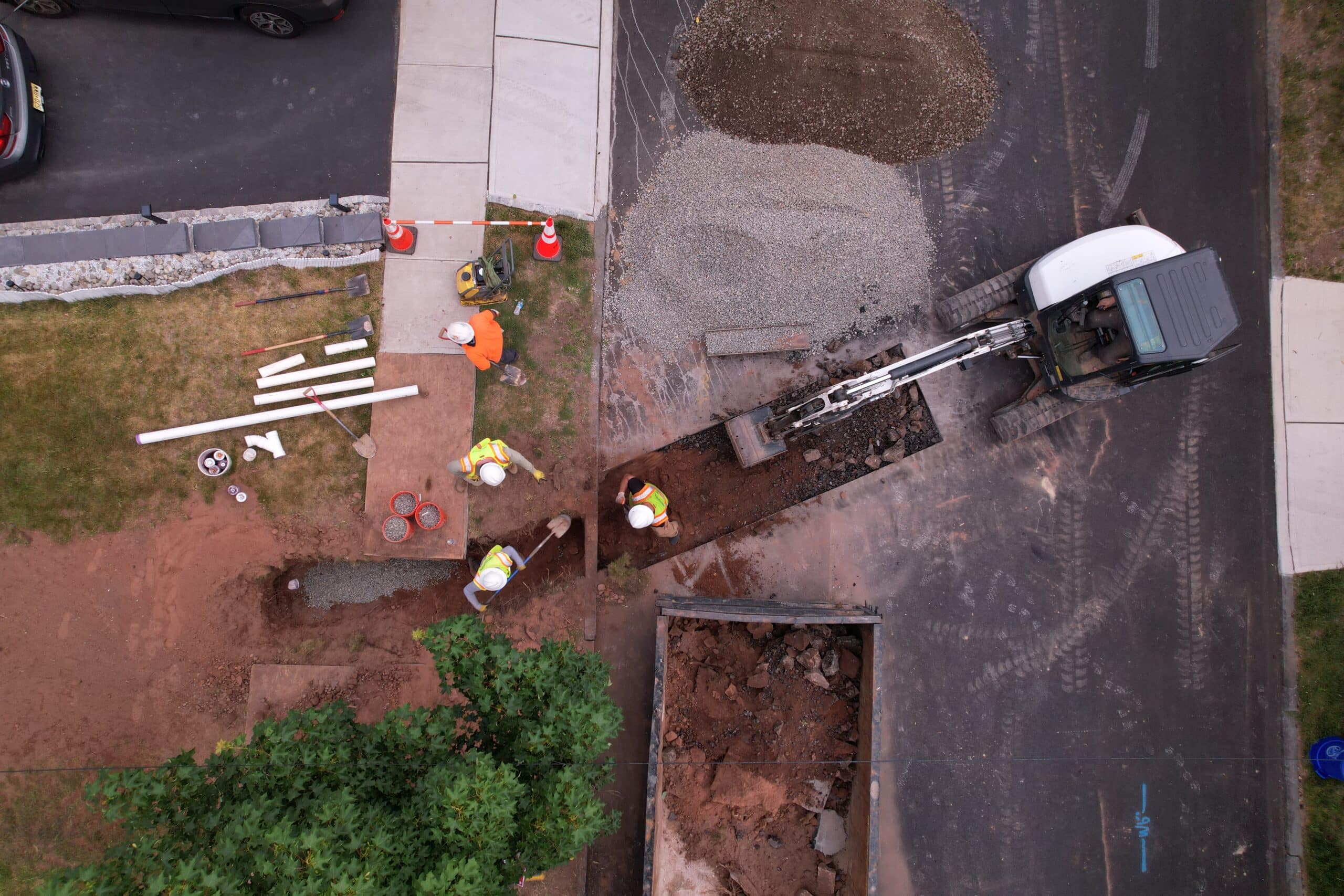Repairing a main sewer line is a complex and potentially messy job that typically requires professional expertise and equipment. Here are the general steps for repairing a main sewer line:
- Assess the Problem: First, you need to determine the nature and location of the problem. Common sewer line issues include clogs, leaks, and breaks. You might notice slow drainage, gurgling sounds, or sewage backups in your home. If you’re unsure about the problem, it’s best to call a professional plumber to inspect and diagnose it.
- Safety Precautions: Before you start any repair work, make sure you take proper safety precautions. Wear appropriate protective gear, like gloves and goggles, and ensure good ventilation in the area.
- Gather Tools and Materials: You’ll need various tools and materials for the job, including a sewer snake or auger, a sewer camera (for inspection), a shovel, a pipe wrench, PVC or cast iron pipe fittings (if replacement is needed), PVC or cast iron pipes (if replacement is needed), pipe cement or adhesive, and safety equipment.
- Locate the Problem Area: Use a sewer camera to locate the exact location of the problem in the sewer line. This helps you identify whether it’s a clog, a leak, or a break and where it’s located underground.
- Clear Clogs: If the issue is a simple clog, you can use a sewer snake or auger to clear it. Insert the snake into the sewer line through an access point, and slowly feed it through the line while turning it. This should break up and remove the clog.
- Repair Leaks or Breaks: If you find a leak or break, you may need to cut out the damaged section of the sewer line and replace it with new pipes and fittings. Use the appropriate type of pipes (PVC or cast iron) and fittings for your system, and make sure to properly glue or seal the connections using pipe cement or adhesive.
- Test the Repair: After completing the repair, run water through the sewer line to check for any leaks or blockages. You can also use a sewer camera to inspect the repaired section to ensure it’s functioning properly.
- Backfill and Restore: Once you’ve confirmed that the repair is successful, backfill the trench with soil and restore any landscaping or structures that were disturbed during the repair.
- Maintain Regularly: To prevent future sewer line issues, consider regular maintenance, such as periodic inspections and preventive measures like avoiding flushing non-biodegradable items down the toilet.
If you need a main sewer line repair and replacement service in New Jersey, contact us at (201) 581-3740 or fill out our contact form.


